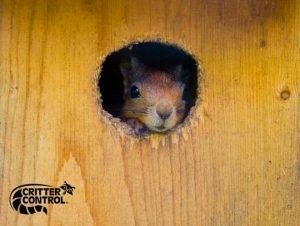 Curious squirrel in natural setting, emphasizing the importance of observing wildlife from a distance instead of direct interaction.
Curious squirrel in natural setting, emphasizing the importance of observing wildlife from a distance instead of direct interaction.
Squirrels, with their bushy tails and nimble movements, are a common sight in many gardens and parks. Their playful antics and seemingly innocent appearance can make it tempting to approach and even pet them. The question “Can I Pet A Squirrel?” often arises when encountering these creatures. However, despite their charm, it’s crucial to understand the realities of interacting with squirrels and why petting them is generally not recommended.
Why Petting Squirrels Is Discouraged
Squirrels are wild animals, and their behavior is governed by instinct and survival needs, not human affection. Approaching a squirrel with the intention to pet it misunderstands their nature. While it might seem like a friendly gesture to you, it can be perceived as a threat by the squirrel. These animals are not domesticated pets accustomed to human touch. Attempting to pet a squirrel can lead to several negative outcomes, primarily for the squirrel itself.
Firstly, the act of trying to pet a squirrel can cause significant stress and fear for the animal. Wild animals are naturally wary of humans, and sudden approaches or attempts to touch them can trigger a flight-or-fight response. This stress can be detrimental to their well-being. Secondly, in their attempt to escape what they perceive as danger, squirrels may injure themselves. Their frantic movements to get away could lead to falls or other physical harm. Finally, and importantly for humans, a frightened squirrel may resort to biting or scratching as a defense mechanism.
Health Hazards: Diseases Squirrels May Carry
Beyond the risk of injury to the squirrel and potential bites or scratches to yourself, there are health concerns associated with direct contact. Squirrels, like many wild animals, can carry a variety of pathogens. While the risk of transmission through casual observation is minimal, handling a squirrel significantly increases the chances of exposure to diseases.
Squirrels are known carriers of diseases such as murine typhus and leptospirosis. Murine typhus is transmitted through fleas, which squirrels can harbor. Leptospirosis is a bacterial disease that can be spread through the urine of infected animals. Additionally, squirrels can carry parasites like ticks and mites, which are vectors for diseases such as Lyme disease and Rocky Mountain spotted fever. While rabies is less common in squirrels compared to some other mammals, it’s still a potential, though rare, risk. Any bite or scratch from a squirrel should be taken seriously and warrants medical attention.
Beyond Petting: Why Direct Interaction Is Problematic
The issue extends beyond just petting. Any form of direct interaction with squirrels, including feeding them, is generally discouraged. Feeding squirrels, while seemingly harmless, can have several negative consequences. It habituates them to human presence and can make them dependent on handouts, reducing their natural foraging behaviors. It also encourages them to approach humans, increasing the likelihood of unwanted interactions and potential bites.
Furthermore, feeding squirrels can attract them to your property, which can lead to property damage. Squirrels are known to gnaw on structures, wires, and other materials. They may chew through roof shingles, vents, and even electrical wiring in their search for food or shelter, leading to costly repairs.
Observing Squirrels Responsibly
The best way to appreciate squirrels is to observe them from a safe distance. Enjoy watching their natural behaviors – foraging, climbing, and interacting with their environment – without attempting to touch or feed them. This respectful approach ensures both your safety and the well-being of these wild creatures. Maintaining a distance allows you to appreciate their charm without posing a threat or encouraging unwanted behaviors. Remember, allowing wildlife to remain wild is the most responsible and beneficial approach for both humans and animals.
